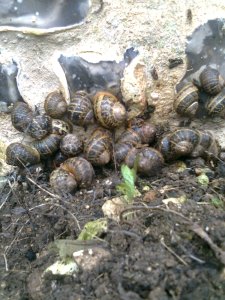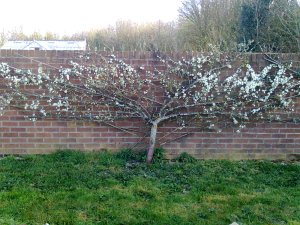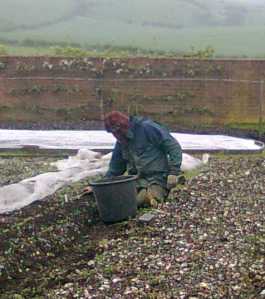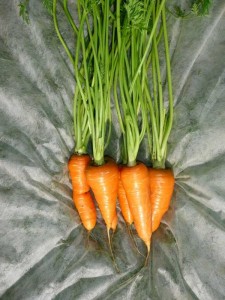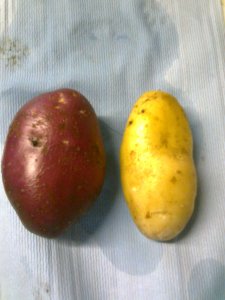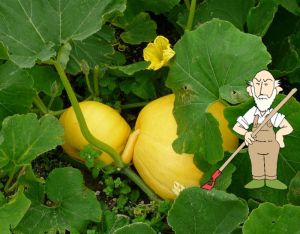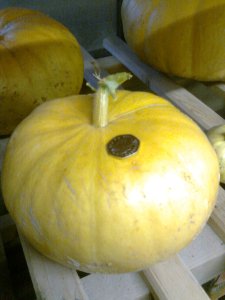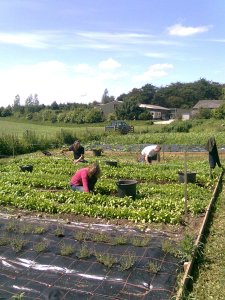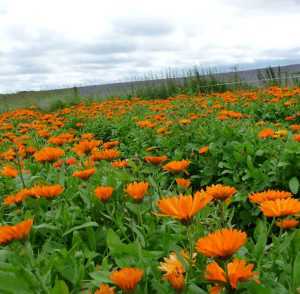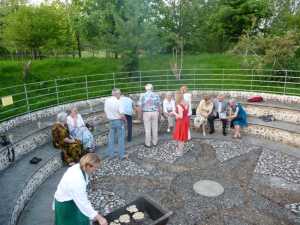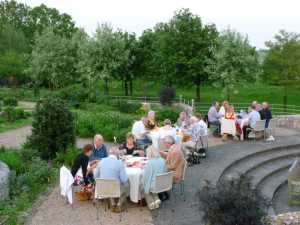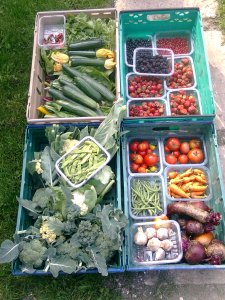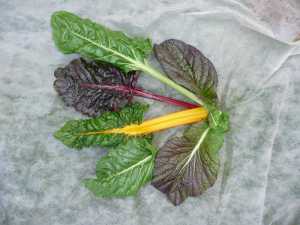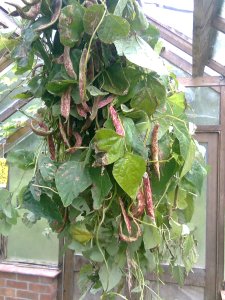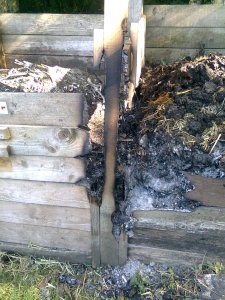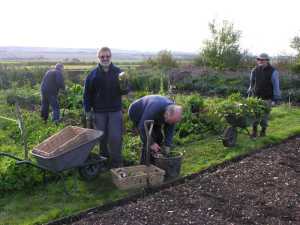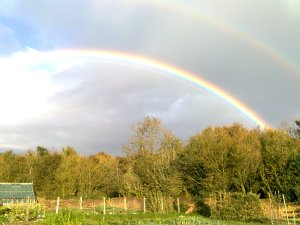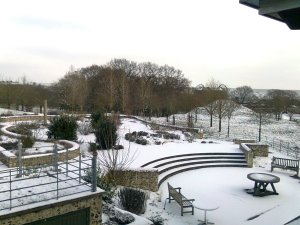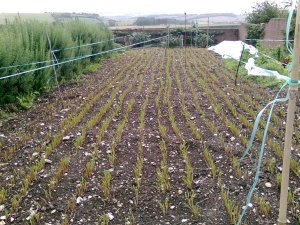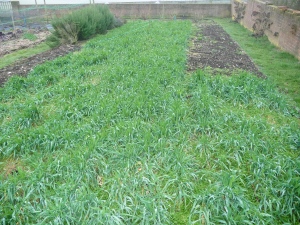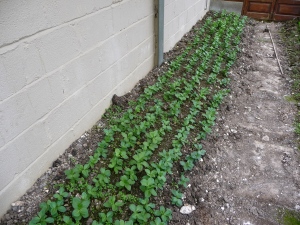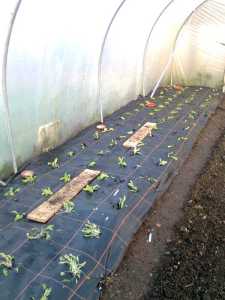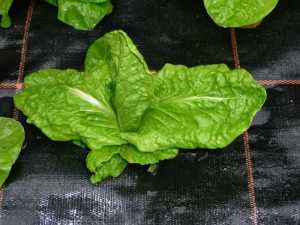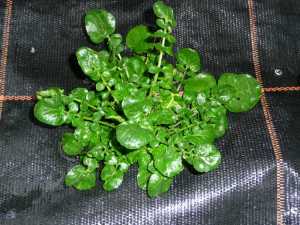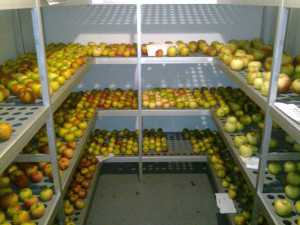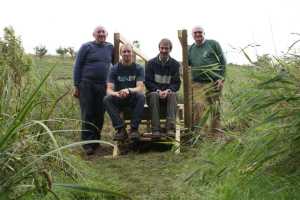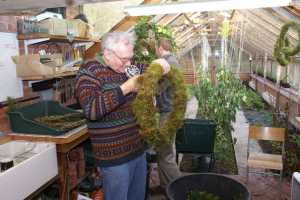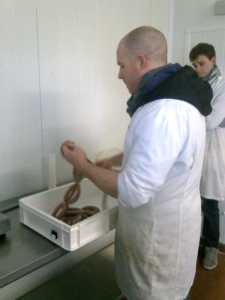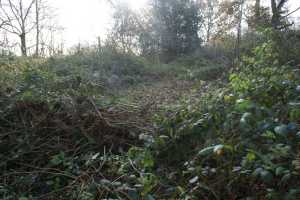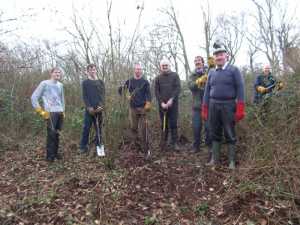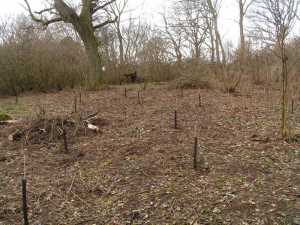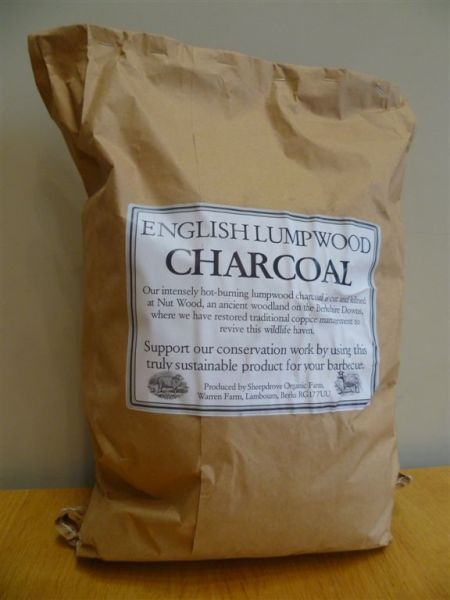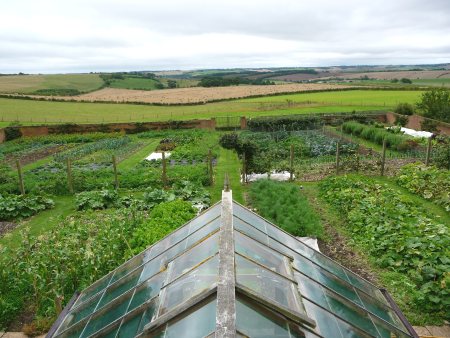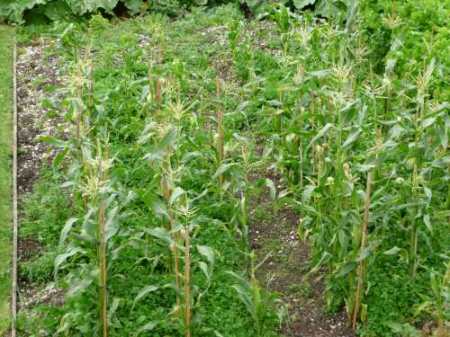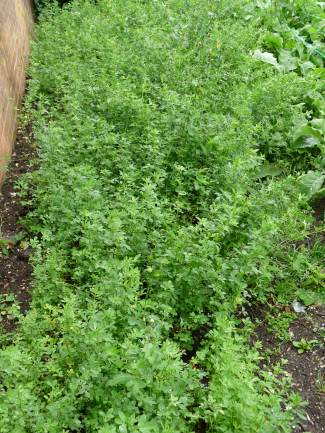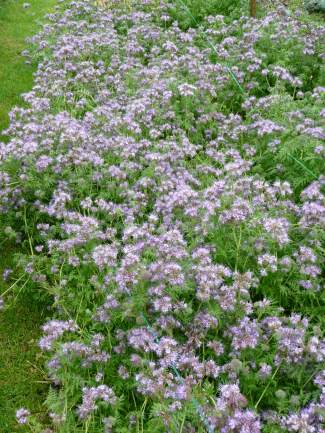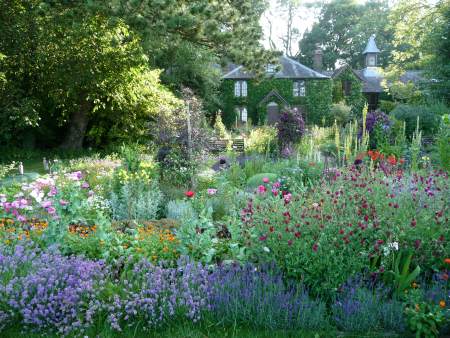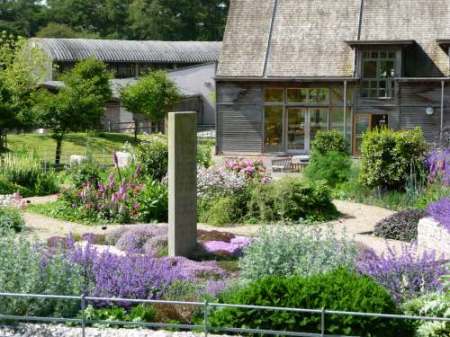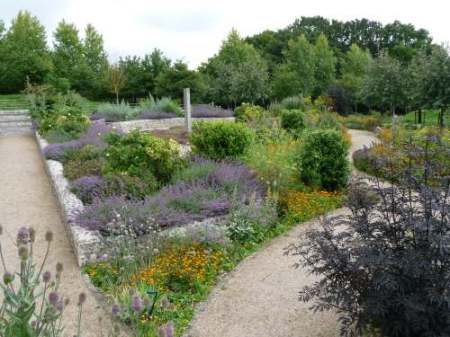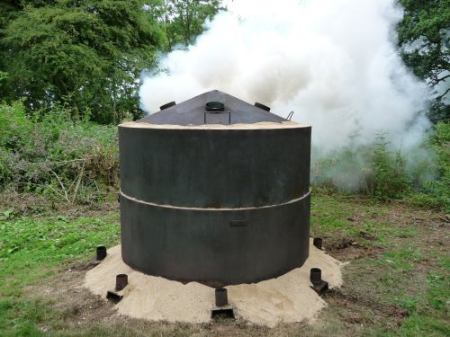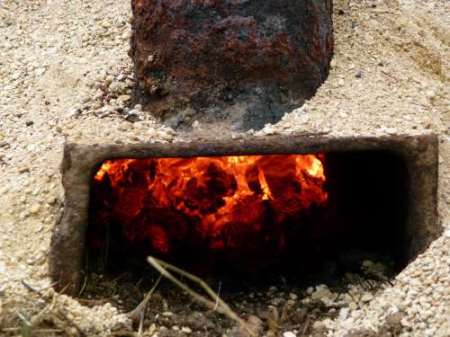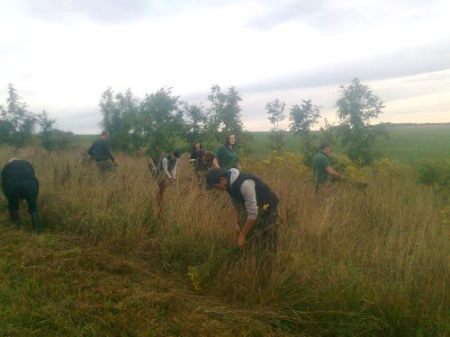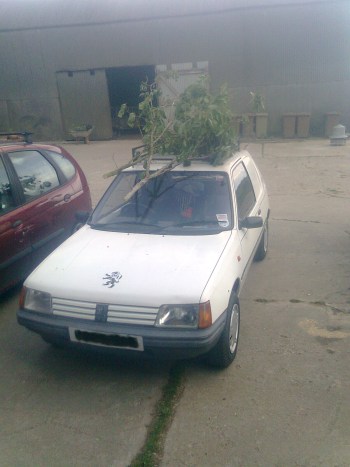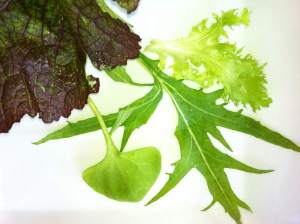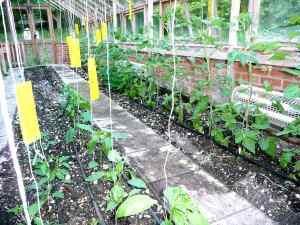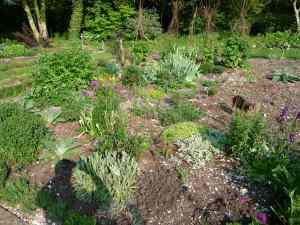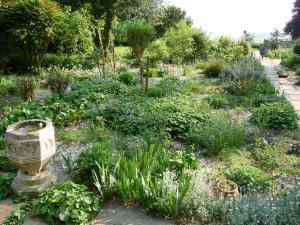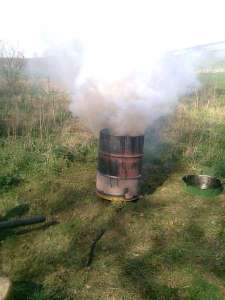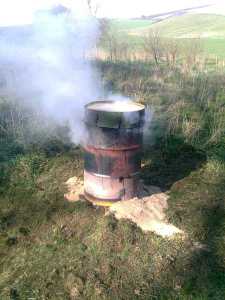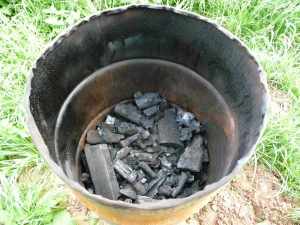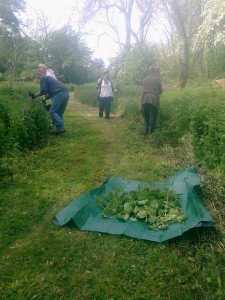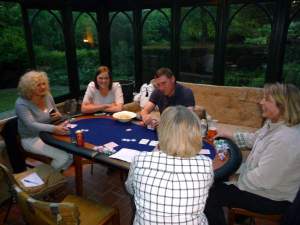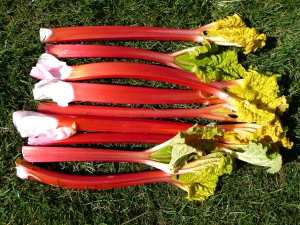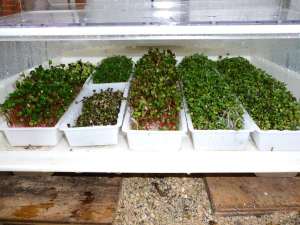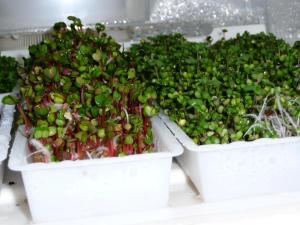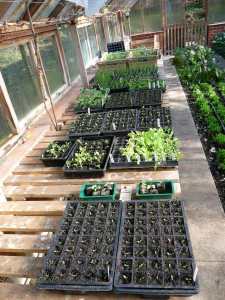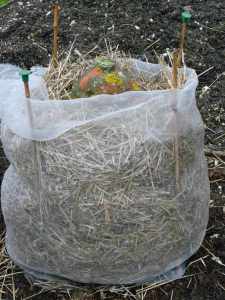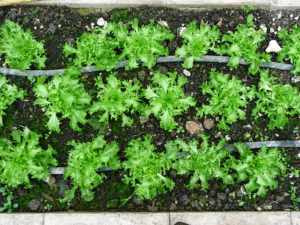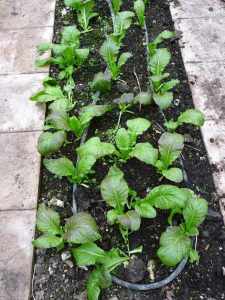Way back in March in that glorious warm sunny week it all looked so promising for the year ahead. We got some early carrots sown then which was just as well because some of the later sowings produced nothing even with two attempts. Then it all changed to a mostly cold wet summer and party time for slugs and snails.
The plums had plenty blossom but as it turned colder and wetter there weren’t many bees about for good pollination . Whereas last year we harvested full crates this time it was merely a handful. Apples were looking the same but in the end we did manage to fill about three quarters of the cold store.
With all the wet weather this Summer it was very rarely dry enough to do any hoeing so there was a lot of hand weeding and it was a struggle to keep on top of this. Weeding some of the early crops was not a fun task in cold weather as you can see from below as a colleague weeds parsnips in full winter gear. Our chef @suzi4goodfood used the thinnings from the parsnips and carrots for some tasty new season meals.
Despite the difficulty of getting carrots to germinate we did get a very good crop with the variety chantenay red cored being a great success. We also grew some wonderfully wacky shaped carrots of white satin.
With the incessant rain all the root crops did well with good beetroot , carrots , parsnips and celeriac. It actually shows how much water these need to bulk them up to a good size. The only really failure this year was onions which obviously don’t like the cold and wet and some of them just sat there all season making very little growth and resulting in a very poor harvest. Early potatoes Amorosa (red) and Charlotte were again a great success and went down well at the conference centre.
I wasn’t sure we would get any pumpkins this year as even under fleece in the cold the plants struggled to get going but in the end we got some monsters.
We supply some of the herbs for Neal’s Yard Remedies and keeping the Calendula clean required another hand weeding effort but it was well worth it. We managed to send the flower heads most weeks through the summer somehow finding dry spells for harvesting. Picking the flowers was usually a team effort with help from the office staff who were glad to get outside for an hour.
At the conference centre once a month there is now a Shhhh secret supper club which has been a huge hit and are usually sold out within a few days of the tickets going on sale. See website for details The idea had been to host them at various venues throughout the farm but this proved impossible with the poor weather . However in May we did manage a night outside in the Physic garden by the conference centre starting in the amphitheatre.
We try to supply all the vegetables and fruit for these events and here is a selection harvested for one of the supper clubs.
Sprouting seeds continue to go down well and there was plenty of colour to add to the chefs selection.
Its always interesting to try and grow something new and this year we grew sweet potatoes in the glasshouse border and another first for me was borlotti beans. Its a very exposed site at the walled vegetable garden so growing anything tall is not easy but the beans did reasonably well . The sweet potatoes on the other hand although they grew well we only harvested very small tubers .I think we will leave this one for warmer countries. Until this year I didn’t even know they were a member of the bindweed family and it was interesting asking visitors to the glasshouse what they thought was growing.
The farm was eventually given permission to install a small wind turbine which was put up earlier in the year in the paddock below the walled garden . Its nearly always windy here although there have been a few rare occasions when it has stopped and birds settled on the propellers.
We have a few chickens up at the farmhouse to provide eggs for the conference centre and I was reminded of ‘Chicken Run’ when Russell the rooster tried to make a break for it hitching a ride in the back of our electric buggy.
During the summer a Pyromaniac hit our compost bins.
He was trying to hide but we caught him.
In October the Berkshire Countryside Volunteers came to help for a day which included a lovely lunch at the conference centre. One of their tasks was helping to harvest celeriac for storing .If you would like to Volunteer at Sheepdrove see the contact details at the bottom of this link.
Now we are making Christmas wreaths for the shops. Lets hope next year will be easier for growers with lots more sun and a lot warmer.
